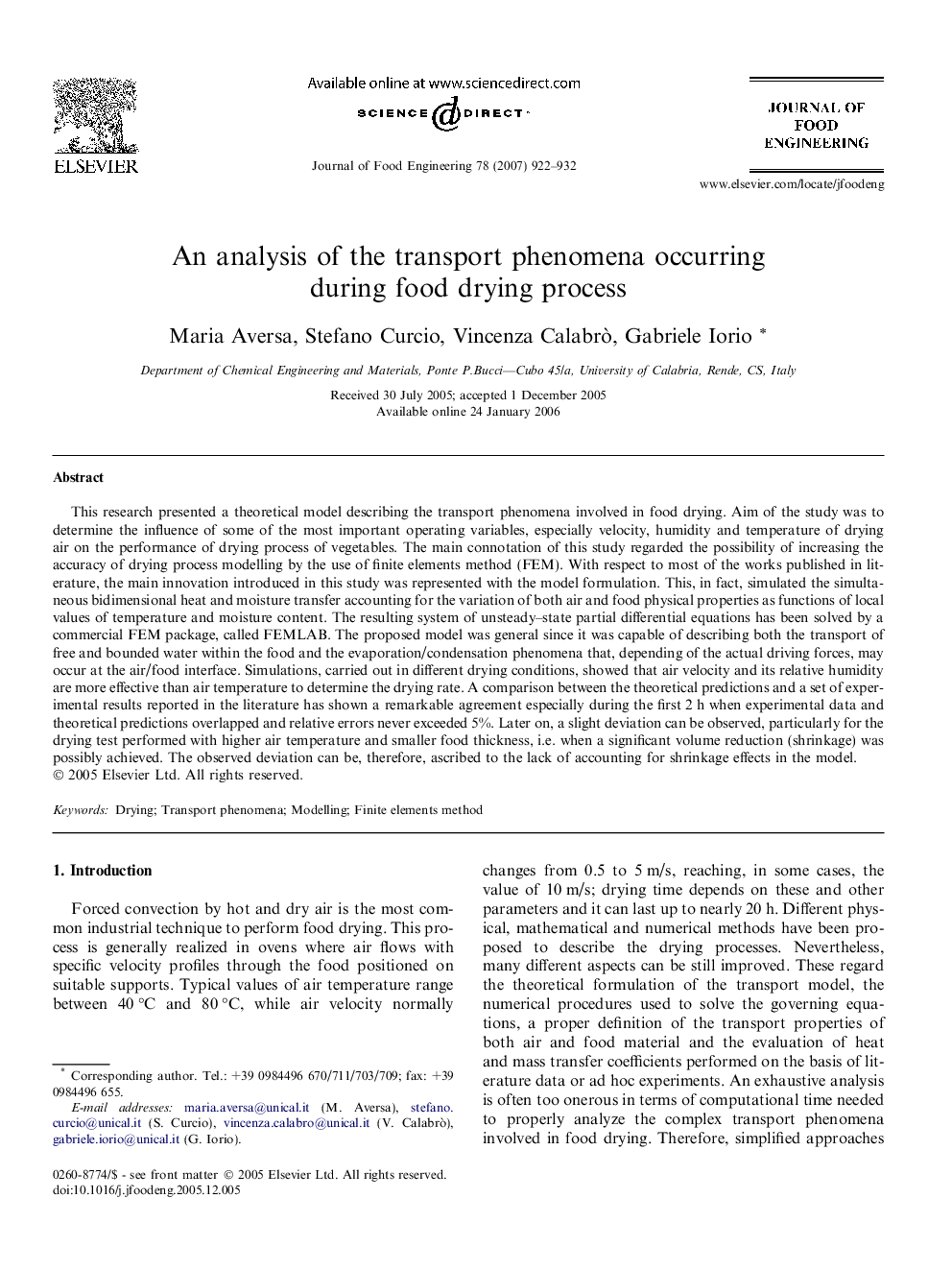| کد مقاله | کد نشریه | سال انتشار | مقاله انگلیسی | نسخه تمام متن |
|---|---|---|---|---|
| 225912 | 464516 | 2007 | 11 صفحه PDF | دانلود رایگان |

This research presented a theoretical model describing the transport phenomena involved in food drying. Aim of the study was to determine the influence of some of the most important operating variables, especially velocity, humidity and temperature of drying air on the performance of drying process of vegetables. The main connotation of this study regarded the possibility of increasing the accuracy of drying process modelling by the use of finite elements method (FEM). With respect to most of the works published in literature, the main innovation introduced in this study was represented with the model formulation. This, in fact, simulated the simultaneous bidimensional heat and moisture transfer accounting for the variation of both air and food physical properties as functions of local values of temperature and moisture content. The resulting system of unsteady–state partial differential equations has been solved by a commercial FEM package, called FEMLAB. The proposed model was general since it was capable of describing both the transport of free and bounded water within the food and the evaporation/condensation phenomena that, depending of the actual driving forces, may occur at the air/food interface. Simulations, carried out in different drying conditions, showed that air velocity and its relative humidity are more effective than air temperature to determine the drying rate. A comparison between the theoretical predictions and a set of experimental results reported in the literature has shown a remarkable agreement especially during the first 2 h when experimental data and theoretical predictions overlapped and relative errors never exceeded 5%. Later on, a slight deviation can be observed, particularly for the drying test performed with higher air temperature and smaller food thickness, i.e. when a significant volume reduction (shrinkage) was possibly achieved. The observed deviation can be, therefore, ascribed to the lack of accounting for shrinkage effects in the model.
Journal: Journal of Food Engineering - Volume 78, Issue 3, February 2007, Pages 922–932